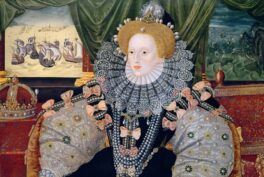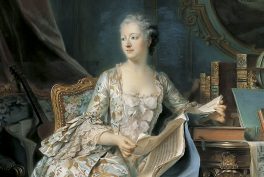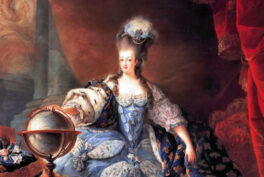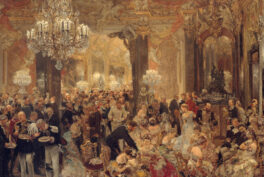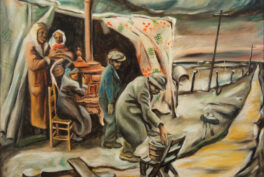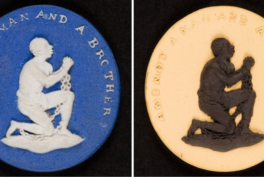Early Life of Joséphine de Beauharnais
Joséphine de Beauharnais was born on June 23, 1763 in Trois-Îlets, Martinique, a French colony in the Caribbean. She was born into a wealthy family and married at age 16 to Alexandre de Beauharnais, a general and viscount of Beauharnais, a French noble family. She moved to France after the wedding and had a son named Eugène and a daughter named Hortense.
However, tragedy struck when Joséphine was widowed at the age of 31 after her husband was executed during the French Revolution. This left her in deep financial distress, facing the challenges of supporting herself and her children alone.
Meeting with Napolean Bonaparte
A year after losing her husband to the guillotine during the tumultuous French Revolution, Joséphine de Beauharnais encountered Napoleon Bonaparte in 1795. Despite him being six years her junior, the young military officer’s charisma and ambition captivated her. Any initial reservations about Napoleon were quickly overshadowed by his rapid ascent to power.
The meeting and courtship, though shrouded in contradictory tales and rumors, culminated in a whirlwind romance that led to their swift marriage on March 9, 1796. However, their union was soon tested days after their wedding, when Napoleon departed for his first Italian campaign. This separation became emblematic of their relationship, characterized by extended periods apart. Napoleon penned numerous impassioned letters to Joséphine during their separation, however, these displays of affection did not always appear to have been strongly reciprocated.
Château of Malmaison
While Napoleon was in Egypt in 1799, Joséphine purchased Chateau de Malmaison, a run-down estate in need of extensive renovations. Joséphine spent a fortune transforming Malmaison into an icon of interior design and exquisite outdoor spaces. She commissioned English gardeners to landscape the grounds in the English style and indulged her love affair with roses. She developed a great passion for botany and horticulture, acquiring a plethora of rare plants and exotic species for the gardens of Malmaison.
The gardens and their treasures were memorialized through paintings and botanical illustrations. As the estate flourished, birds and animals began to enrich her garden, freely roaming the grounds. At its peak, Malmaison was home to a variety of exotic animals from all over the world.
The Patronage of European Artists
Throughout her life, Joséphine worked with and sought out the works of many artists, designers, and architects. Her patronage played a significant role in shaping the aesthetics of the Napoleonic era, which drew inspiration from ancient Greek and Roman art. Josephine inspired and promoted neoclassical artists, encouraging the production of artworks that reflected classical themes and ideals. She patronized renowned painters such as Jacques-Louis David, François Gérard, and Pierre-Paul Prud’hon, commissioning numerous portraits and decorative works for her residences. Additionally, Josephine amassed an impressive collection of artworks, including paintings, sculptures, and decorative arts, further establishing her legacy as a patron of the arts.
Joséphine, The Muse & the Fashion Icon
From her humble beginnings as a provincial outcast, Joséphine emerged as a trendsetter, setting fashion and design standards of French high society during the Napoleonic era. With her impeccable taste in clothing and interior design she influenced the aesthetic landscape of her time.
Artists captured her essence and her prominence in countless portraits, even in allegorical or mythological contexts emphasizing her influence on fashion, design, and cultural ideals of beauty.
The Termination of the Marriage
Napoleon’s frequent military campaigns often kept him separated from Joséphine for extended periods, leading to loneliness and frustration on both sides. Rumors of promiscuity and extramarital affairs circulated, adding strain to their relationship. However, when their marriage was annulled in 1809, it was primarily because Joséphine had not, and was unlikely to, produce a much-needed heir for Napoleon, crucial for his political ambitions. The decision, believed to have been mutually consented to, was nonetheless emotionally challenging for both. Despite the end of their official relationship, Napoleon continued to support Joséphine financially, granting her the title of Empress Dowager and the enjoyment of the Elysée Palace, Château de Navarre, and the Malmaison estate.
Joséphine retreated to her private residence at Malmaison, where she spent time with her grandchildren during the summers, hosting lavish gatherings. Following Napoleon’s fall in 1814, Joséphine developed closer relations with Tsar Alexander I until she succumbed to pneumonia on May 29, 1814.
The Enduring Legacy of Joséphine
Joséphine emerged as a prominent patron of art and culture during the Napoleonic era, leaving a lasting imprint on the visual and material culture of her time. Her enduring legacy is characterized by her patronage of the arts, which she skillfully utilized as a tool for cultural diplomacy. Joséphine sought to strengthen France’s cultural ties with other nations through the exchange of gifts of art with foreign dignitaries and the promotion of French artists abroad. Her efforts played an important role in the development of French culture during her era, contributing to its flourishing on the international stage.

